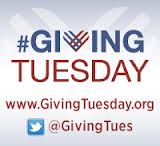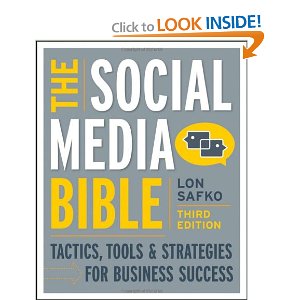 I was chatting the other day with a newly elected board president. He was lamenting the fact that his fellow board volunteers don’t respond to his emails very well, and he wanted a little advice on how to change this dynamic. If this is a problem for your organization, then please keep reading.
I was chatting the other day with a newly elected board president. He was lamenting the fact that his fellow board volunteers don’t respond to his emails very well, and he wanted a little advice on how to change this dynamic. If this is a problem for your organization, then please keep reading.
There are any number of ways to look at this situation:
- This could be a “people” issue
- This could be an “organization“ issue
- This could be a “process or tools” issue
Let’s take a look at these possibilities one at a time.
People issue
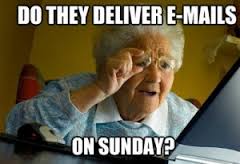 Within this broad category, there are many considerations.
Within this broad category, there are many considerations.
- Are your board volunteers tech savvy?
- Do board members understand their roles and responsibilities?
- Do these individuals have the appropriate experiences and skills to deal with whatever is being sent to them in these emails? (aka do you have the right people around the table)
- Do these people care? Are they mission focused?
- Does the culture of your organization embrace technology? Or is the way it has always been done more personal and in-person meeting oriented?
In my experience, most of us jump to the conclusion that email unresponsiveness is a people issue (e.g. they don’t care, they’re too busy, etc). However, there might be other issues. Let’s take a look at organization and tools issues in the next two sections.
Organization issue
 Believe it or not, how you are structured can greatly effect how people decide to use email as it relates to your organization.
Believe it or not, how you are structured can greatly effect how people decide to use email as it relates to your organization.
- Does your organization cover a large geographic territory? And do board members live far and wide thus making in-person meetings more difficult?
- How often does the board or committee meet in-person? If it is often, then some individuals may simply put off responding to emails because they see an opportunity to share their thoughts in-person.
- How many standing committees and work groups exist in your organization? Are these organizational silos? If so, then how do they communicate with each other and with the governing board? Is this spelled out in the bylaws or committee charter? (e.g. they must report at board meetings, etc)
- From a board governance perspective, has your organization made changes to its bylaws to allow for the use of newer technology to make decisions? (e.g. electronic/email voting)
I know it can be hard to believe, but how we structure our organizations (and even the internal design of our workplaces) and teams can impact our email usage (and even more broadly how we use tech).
Five years ago, I was working for a national non-profit organization on a team that was scattered all over the country and in four different time zones. This organizational dynamic drove all sorts of decisions including monthly conference calls, the need for in-person staff meetings two or three times per year, optimal times for conference calls, use of email to distribute materials and collect feedback, shared document storage/access, etc.
“Structure” . . . it is an invisible force that drives human behavior more than any of us think.
Tools issue
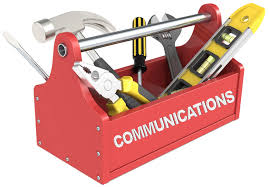 Email is simply a communication tool. Here is an inventory of tools/processes/approaches that you may find in your communications toolbox:
Email is simply a communication tool. Here is an inventory of tools/processes/approaches that you may find in your communications toolbox:
- Telephone (individual one-on-one or conference call)
- In-person meetings (individual one-on-one or group)
- Webcam (individual one-on-one or group)
- Online project management collaboration services (e.g. Basecamp)
- Private, group messaging and chat tools
- Social media
- Online groups and discussion forums
I’m sure that I’ve missed a number of other communications tools. You are welcome to add those in the comment box of this blog post.
Each of these tools is designed to do something very well, but of course they all have their shortcomings. The best question to ask yourself when confronted by a situation that doesn’t seem to be working (e.g. people aren’t responding to email) is . . .
Am I using the right tool for what I want to accomplish?
My final thoughts?
We all have our “points of view” on things. It doesn’t mean that we’re necessarily right or wrong. Here is what I believe about email:
- It is a great information sharing tool (e.g. distribution of agendas, meetings notes, materials, etc)
- It is a poor discussion tool (e.g. asking for feedback, advice, anything conversational)
- It is used differently by every generation
- It is easy to ignore and many people have developed user habits around this tool (e.g. deleting habits, reading habits, etc)
The advice I gave to my board president friend was . . .
Pick-up the phone if they aren’t responding to your email!
I also asked additional questions about which volunteer engagement strategies he was using and which ones were lacking. Each of the nine volunteer engagement strategies (e.g. urgency, accountability, planning, setting expectations, etc) come with a number of tools (e.g. goals, dashboards/scorecards, action item memos / task lists, project management punch lists, written volunteer job descriptions, committee charter, committee work plan, etc).
In other words, the choice of communication tool might not be the problem. It could be the organization isn’t using best practices associated with volunteer engagement, which is resulting in email unresponsiveness.
The morale to today’s post?
Simple problems may not be as simple as they seem, especially when we’re talking about groups of people under one organizational umbrella. So, my advice is . . .
Don’t jump to conclusions. Do the hard work in thinking it through!
Here’s to your health!
Erik Anderson
Founder & President, The Healthy Non-Profit LLC
www.thehealthynonprofit.com
erik@thehealthynonprofit.com
http://twitter.com/#!/eanderson847
http://www.facebook.com/eanderson847
http://www.linkedin.com/in/erikanderson847

 This month DonorDreams is hosting the nationally acclaimed
This month DonorDreams is hosting the nationally acclaimed  Ahhhh, yes. I remember this embarrassing lesson very well. It occurred in the late 1990s when I was a young Boy Scout professional who was responsible for membership management, district-wide programming, local unit support and fundraising for a small suburban district in the Northwest Chicago suburbs. It was the 20th Century and the idea of email was new and evolving as a way to communicate with non-profit volunteers.
Ahhhh, yes. I remember this embarrassing lesson very well. It occurred in the late 1990s when I was a young Boy Scout professional who was responsible for membership management, district-wide programming, local unit support and fundraising for a small suburban district in the Northwest Chicago suburbs. It was the 20th Century and the idea of email was new and evolving as a way to communicate with non-profit volunteers. To better understand what I just said, I will use a simple analogy . . .
To better understand what I just said, I will use a simple analogy . . . Sometimes, when I’m daydreaming, I imagine myself in a time machine going back to 1999 to have a serious conversation about email usage with my younger-fundraising-self. I also sometimes wonder if it would be helpful to take a page out of the Arnold Shwarzenegger Terminator movies by traveling back in time to sabotage the work of the person who created email. 😉
Sometimes, when I’m daydreaming, I imagine myself in a time machine going back to 1999 to have a serious conversation about email usage with my younger-fundraising-self. I also sometimes wonder if it would be helpful to take a page out of the Arnold Shwarzenegger Terminator movies by traveling back in time to sabotage the work of the person who created email. 😉 There are many ways to ask individuals for donations and support, and not every nonprofit asks in the same way. However, a new report from the fundraising
There are many ways to ask individuals for donations and support, and not every nonprofit asks in the same way. However, a new report from the fundraising 
 It has been called a crisis, scandal, controversy, and problem by journalists. If you are remotely plugged into the world around you, then you’ve probably heard or read something about
It has been called a crisis, scandal, controversy, and problem by journalists. If you are remotely plugged into the world around you, then you’ve probably heard or read something about  None of this was malicious. It was always done out of a frantic sense of convenience and lack of time (or so I told myself).
None of this was malicious. It was always done out of a frantic sense of convenience and lack of time (or so I told myself). Most non-profit organizations are stretched too thin. I know, I know. But this is something you need to make time for because it is important.
Most non-profit organizations are stretched too thin. I know, I know. But this is something you need to make time for because it is important. Create separation and segment your life
Create separation and segment your life It hasn’t been talked about much, but the Hillary Clinton email story is a “
It hasn’t been talked about much, but the Hillary Clinton email story is a “ I’ve been blogging regularly since May 2011, which makes DonorDreams blog three years old next month. As with everything in life, there have been ups and there have been downs with things such as readership, content, and tech issues. I’m sure those of you who know me well, won’t be surprised to read that I tend to obsess over questions such as:
I’ve been blogging regularly since May 2011, which makes DonorDreams blog three years old next month. As with everything in life, there have been ups and there have been downs with things such as readership, content, and tech issues. I’m sure those of you who know me well, won’t be surprised to read that I tend to obsess over questions such as:

 The most important question in all marketing is one we broached in
The most important question in all marketing is one we broached in  As you work to perfect your strategies, it is important to take some time to test it through what Safko calls segmenting.
As you work to perfect your strategies, it is important to take some time to test it through what Safko calls segmenting.
 You know what Douglas Adams says (according to
You know what Douglas Adams says (according to 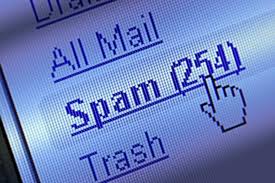 When I look at my email inbox, I do a lot of scanning. I first look at the names of people who sent me something. As I do this, I am deleting anything that vaguely looks like spam or advertising. I don’t even open it. After this first purge, I re-visit those who are left standing and start looking at subject lines. I’m essentially trying to prioritize what I should open first versus leave for later when I have more time. And when I say “leave for later,” it could be days or weeks later.
When I look at my email inbox, I do a lot of scanning. I first look at the names of people who sent me something. As I do this, I am deleting anything that vaguely looks like spam or advertising. I don’t even open it. After this first purge, I re-visit those who are left standing and start looking at subject lines. I’m essentially trying to prioritize what I should open first versus leave for later when I have more time. And when I say “leave for later,” it could be days or weeks later.